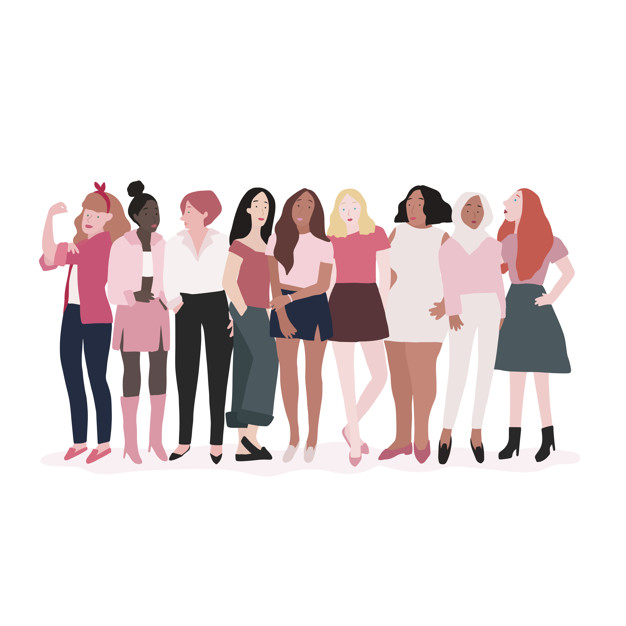For decades, managing household finances has been dominated by males. In fact, in two-thirds of U.S. households, men are the key financial decision-makers. But this isn’t a coincidence; it’s a direct result of history.
Take banking as a prime example. In 1970, women in the U.S. were not allowed to open a checking account or be issued a credit card without a husband’s permission. Further, women couldn’t even obtain a mortgage or get a business loan without a male co-signer. Why? At that time, men were looked at as breadwinners and beneficiaries, and women were seen as dependents. That all changed in 1974 when the Equal Opportunity Act passed that prohibited credit discrimination based on gender. The result was an act that expanded the possibilities for American women.
Fast forward to today, financial independence is within reach for women around the world. And while gender equality has undoubtedly played a significant role in elevating women’s rights in finances, one tool has helped women take an even larger step towards financial independence: technology. Here’s how:
Access to the Internet
The concept of the internet occurred in the 1960s, but it took decades to successfully connect networks in multiple locations. And it wasn’t until 1995 when the internet had its watershed year: Amazon, Yahoo, eBay and Internet Explorer launched.
Gaining access to the internet helped further educational opportunities for women,– increasing their acumen in math, finance and business, which has accelerated female financial freedom. A study from Intel found that 77% of women today use the internet to further their education. We’ve come a long way from when women couldn’t get a degree simply because they physically couldn’t go to a classroom due to responsibilities in the home. Today, 2.95 million women in the workforce have at least a bachelor’s degree, which surpasses the number of college-educated men.
Remote Work Offers Flexibility
Also thanks to the internet, companies can now offer greater flexibility in career opportunities by breaking down physical, geographic and social barriers within the workplace.
Millions of women leave the workforce every year, because of the lack of flexibility for work-life balance. This stifles their earning potential and decreases their ability to achieve breadwinner parity at home. The problem was exacerbated in 2020 during the coronavirus pandemic, where one in four women considered leaving the workforce because the pandemic upended school and childcare.
While COVID-19 forced offices worldwide to close, companies like mine, Paysend, realized the benefits of remote work. In fact, Paysend’s workforce is currently working from home due to the pandemic. Recently, Paysend’s employees took part in an employee survey which was focused around employee engagement, development & well-being, strategy & recognition and leadership & empowerment . Overall the results were positive.
But Paysend isn’t the only company that figured out that remote work is the future of work. According to a global workplace analytics survey of employees working remotely during the pandemic, 86% of respondents say they feel more productive working from home Further, of the 3,000 respondents, 76% want to continue working from home at least 2.5 days per week, on average. This shift to remote work can minimize the number of women leaving the workforce every year, according to a report where 75% of women surveyed said that the chance to work remotely was necessary if companies wanted to retain long-term staff.
Access to Cellphones
In addition to the internet, over the past 40 decades, access to cellphones has helped women gain access to financial services and tools, especially in developing nations.
According to a Gallup World Poll, 83% of adults in developing economies have a mobile phone as of 2018. Of that number, 79% of women have a mobile phone. And it’s important to point out that these phones aren’t simple mobile devices that enable users to make phone calls or texts. These developing nations have access to smartphone capabilities, opening the doors to financial apps and tools that were not available before.
Specifically, consumer financial applications are lowering the entry barrier for women of all ages and educational levels to engage in the global marketplace. Take, for example, Robinhood, the investment platform. The platform and mobile app allow users to trade stocks and funds or buy or sell crypto conveniently from any location. Additionally, mobile apps, like PolicyGenius and Fabric, enable users to shop, compare and sign-up for new life and home insurance policies conveniently with a click of a button. Unlike traditional providers, women don’t have to apply for these policies in-person.
The past 60 years of digital innovation has undoubtedly accelerated female financial acumen and independence. It’s no surprise that by 2030, American women are expected to control $30 trillion in financial assets, up 200% compared to the amount that women currently control today. As a result of this advancement – new educational tracks, commerce opportunities, and business/government leadership positions will continue to open up to women – driving greater gender diversity and equality across the globe.
